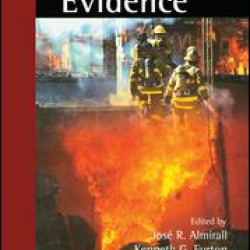Forms of Crime
Brand: Taylor & Francis
Model: Stock
Bridging the fields of investigation and forensic chemistry, this volume introduces techniques for determining the presence of ignitable liquid residues (ILRs) at fire scenes. It thoroughly examines evidence detection, collection, packaging, and transport. The initial chapters are written from an in..
₹9,547.20 ₹11,934.00
Brand: Taylor & Francis
Model: Stock
Engineering Analysis of Fires and Explosions demonstrates how professional forensic engineers apply basic concepts and principles from engineering and scientific disciplines to analyze fires and explosions. It describes how forensic engineers use a "reverse design" process to determine the original ..
₹10,281.60 ₹12,852.00
Brand: Taylor & Francis
Model: 9780415248914
Fire Investigation covers the concepts and theories used to determine whether a specfic fire has been deliberately or accidentally set. The author clearly explains the concepts needed to gain insight into a fire scene investigation, including the dynamics of the fire, the necessary conditions for a ..
₹9,547.20 ₹11,934.00
Brand: Taylor & Francis
Model: Stock
GC-MS Guide to Ignitable Liquids offers a selection of more than 100 different ignitable liquid formulations designed to supplement the laboratory's standard collection. Both total ion chromatograms and extracted ion chromatograms (mass chromatograms) are included. Written by authors who are also ex..
₹14,687.99 ₹18,359.99
Brand: Taylor & Francis
Model: Stock
A bestseller in its second edition, this volume introduces new case studies to illustrate concepts explained in the text, includes information about eliminating accidental causes of fires and investigating fatal fires, and presents information on studies of bloodstain evidence found at fire scenes. ..
₹8,078.40 ₹10,098.00
Showing 1 to 5 of 5 (1 Pages)





